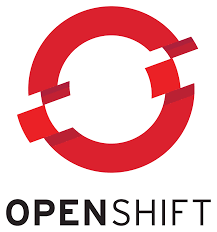Let’s discuss various Red Hat OpenShift build strategies in this article. At Bobcares, with our Server Management Service, we can handle your issues.
Various Red Hat OpenShift Build Strategies
Red Hat OpenShift gives us different build strategies to build the apps from code and put them into containers. We can choose the method that fits best with how we work and what the project needs. The various kinds include:

Source-to-Image:
One famous build strategy for OpenShift that simplifies the process of creating container images from app source code is the Source-to-Image (S2I). Its goal is to make the build process easier by abstracting away the difficulties involved in manually managing dependencies and building Dockerfiles.
Developers use S2I to distribute their source code together with a base image, or builder image, that has the development tools and runtime environment needed. The S21 process will then carry out the build process, which also creates a new container image with the app in it after injecting the source code into the builder image.
Dockerfile Build:
Developers can specify unique Dockerfiles to create container images using Dockerfile Build. With this approach, developers have complete control over the build process and may define the base image, dependencies, build phases, and additional configuration parameters.
Developers then create a Dockerfile that contains the building rules for the app image. Typically, the Dockerfile contains instructions for configuring the runtime environment, copying source code into the image, and installing dependencies. Next, OpenShift uses the Dockerfile’s provided instructions to generate the container image.
Pipeline Build:
Jenkins Pipeline Build, another name for Pipeline Build, is an open-source automation server that combines with Jenkins in order to allow for more specific build workflows and pipelines for CI/CD.
Using Groovy-based DSL (Domain-Specific Language), developers design Jenkins pipelines, outlining the phases and procedures for developing, testing, and deploying applications. Jenkins agents carry out these pipelines and coordinate the whole CI/CD process.
Custom Build:
Custom Build enables developers to create container images using external build systems or custom build scripts. With this approach, we can integrate build tools from third parties, build pipelines, or application-specific build procedures with full flexibility.
The build process is defined by developers and can be carried out in the OpenShift environment through scripts or commands. Without being restricted to a particular build strategy or toolset, Custom Build enables developers to take advantage of already existing build automation tools, scripts, or procedures.
[Need to know more? Click here to reach us.]
Conclusion
We can see 4 different types of build strategies in Red Hat OpenShift in this article.
PREVENT YOUR SERVER FROM CRASHING!
Never again lose customers to poor server speed! Let us help you.
Our server experts will monitor & maintain your server 24/7 so that it remains lightning fast and secure.







0 Comments